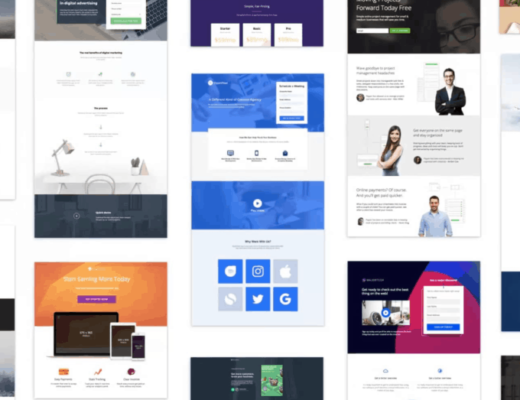Your website should be built with a mobile-first design approach. This is not the same as a responsive design because of key differences.
When you build a responsive website, you’re starting with a site that looks great on a desktop and adapting it to fit and perform on mobile devices. When you build a mobile-first website, you’re creating it for mobile devices and adapting it to fit and perform on desktops.
Benefits of a Mobile-First Website
The use of a design that’s made for mobile devices is simple and minimal compared to those that we see on desktop screens. With more users starting their search for everything on mobile devices, it’s important that you create a site that allows mobile searches to be used first, followed by desktop searches.
A mobile-first website can also:
• Offer a better user experience on portable devices
• Use the features that are built into the phone or tablet
• Save money that you might have to spend on apps and other solutions
• Help users focus on the content
• Increase reach and visibility
• Offer easier navigation solutions
Your Website Needs a Mobile Presence
While there are a few benefits to a website that offers a responsive design, according to Designrush.com, “57% of internet users won’t recommend a business that has a poorly designed website on mobile devices”. With that in mind, you need to act and build a mobile-first website that will stand out to your users. Here are some steps to follow.
The User Experience Must be the Most Important Aspect of Your Design
What causes users of your website trouble? What suggestions have they given you to improve your site? These items are called pain points and if you address them, you’ll offer a better solution and website to your customers. Your mobile-first website needs to offer information quickly, easily, and without much trouble at all. Give your users what they desire.
Get started by doing the following:
• Examine other mobile-first websites to see how they offer information
• Review your competition to see what they offer for mobile users
• Ask your visitors about any issue they have, especially if there is a common exit point on your website
Be Concise in the Content You Create for a Mobile-First Website
When a user is looking for information and an answer to a question, they aren’t often looking for a long and fluffy article to read. With mobile searches, we want information right now and as concisely as possible. This means you need to have content that offers these answers quickly and in the shortest way possible.
Optimize your content for your mobile users by doing the following:
• Keep title on top and let your previews stay where your readers can see them quickly
• Ensure your images and videos are optimized for mobile use
• Offer only relevant content
• Be as succinct as possible with the information you offer
• Create content with more one-sentence paragraphs for easier skimming
Simplify Your Website for the Best Mobile Experience
Mobile devices need to load websites quickly to satisfy users and when you employ a simple and minimal design, you’ll accomplish what you desire. You want to give your website to your users quickly and without any hiccups along the way. You’re creating a mobile-first website for smartphones and tablets and the users that’s busy and on the go.
Here are some great ways to simplify your website design:
• Fewer links to your navigation menu
• Simple type and fonts to make it easy to see
• Using wide borders and clean lines
• Reduce the number of pages on the website
• Use the whitespace in the layout
• Use no more than two columns of content
Your Action Elements Need to Stand Out
When you build a typical website for a desktop, your call to action messages and other action items can be built into the content and be more subtle. When you’re building a mobile-first website, you want these items to be bold and offer a consistent message to your users. The clean design you employ can be improved with clear and bold messages that suggest action by the user.
Other items that help your action messages stand out are:
• Contrasting color schemes
• Geometric shapes and patterns
• Video and image backgrounds
• Strong type and fonts
Focus on the Speed Your Website Loads on Mobile
One of the most important aspects of your mobile-first website’s performance for a user is how fast it loads on their device. If your site takes too long to load, they will move on to another site and see what is offered, leaving you behind.
Improve the site load speed by:
• Compressing images to reduce the size
• Use “lazy load” to add some items right away while others are being loaded
• Use HTTPS protocol to give you better SEO ranking and faster loading speeds
Build your mobile-first website and let more of your users see what you offer on their smartphones or tablets during their busy days.
This post may contain affiliate links. Meaning a commission is given should you decide to make a purchase through these links, at no cost to you. All products shown are researched and tested to give an accurate review for you.




